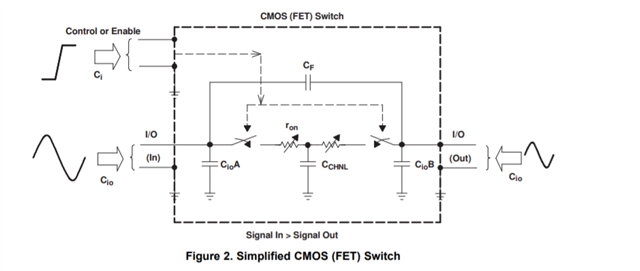The Datasheet specs CNC(ON), CNO(ON), CCOM(ON)
[1]
Assuming a signal gets routed from [Host] -> [NO->COM] -> [Device]; will the signal see rise-times that relate to the combined CNO(ON) + CCOM(ON)?
[2]
Basically, the bus capacitance would be the combined NO/NC + COM capacitances, right? (55pF + 54.5pF)
[3]
Is this capacitance between the signal line and GND?


